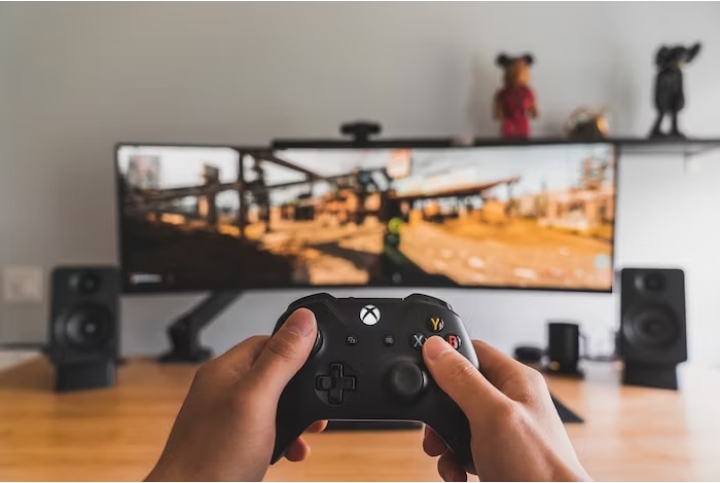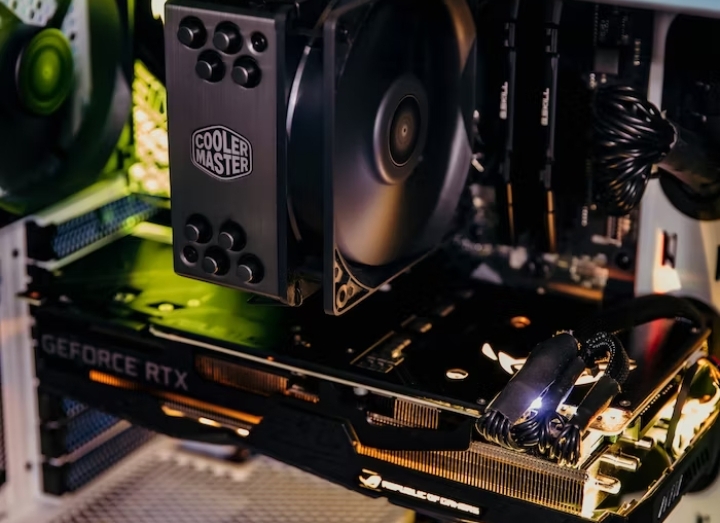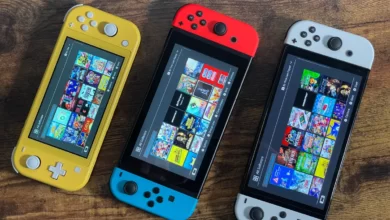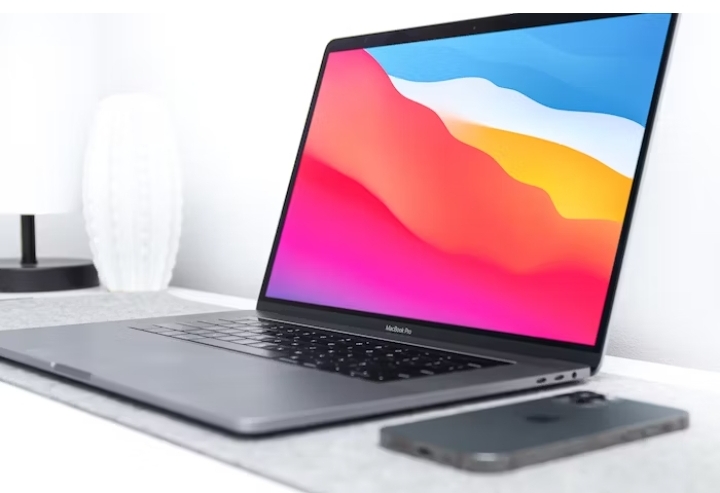What Is Variable Refresh Rate in Video Games?

Variable refresh rate is becoming more common in both console and PC gaming. Let’s take a closer look at what it is.
Screen tearing and stuttering break game immersion, therefore V-Sync was built to address these concerns. Turning on V-Sync, on the other hand, has some disadvantages. The solution is variable refresh rate (VRR). Although it sounds similar to V-Sync, VRR is far superior.
But what exactly is VRR? And how does it work?
What is Refresh Rate?
Before talking about VRR, let’s first grasp the concept of refresh rate. The refresh rate refers to the number of times a display updates its image per second, measured in Hertz (Hz). A higher refresh rate allows for smoother transitions between frames, resulting in a more fluid visual experience. Traditional displays usually have fixed refresh rates, such as 60Hz or 144Hz, meaning they update the image at a constant rate.
What Is Screen Tearing, and What Causes It?
Screen tearing is a phenomenon that occurs when the image displayed on a screen is not in sync with the refresh rate of the monitor or display device. It often appears as a horizontal line or a visible split between two parts of the image.
To understand screen tearing, it helps to know a bit about how monitors work. Monitors have a refresh rate, which is the number of times per second the screen updates or “refreshes” the image. This is typically measured in Hertz (Hz). For example, a monitor with a refresh rate of 60Hz refreshes the image 60 times per second.
Now, when the refresh rate of the monitor and the frame rate of the content being displayed are not synchronized, screen tearing can occur. The frame rate is the number of frames or images that are being rendered and displayed per second. For instance, if you’re playing a video game and the frame rate is higher than the refresh rate of your monitor, you may experience screen tearing.
Here’s how it happens: Let’s say your monitor is refreshing the image at 60Hz, but your game is producing 80 frames per second. Since the frame rate is higher than the refresh rate, the monitor may start displaying a new frame before it has finished displaying the previous one. As a result, you end up with a partial image from two different frames appearing on the screen simultaneously, causing the tearing effect.
Screen tearing can be quite distracting and can impact the visual experience, especially in fast-paced content like video games or action-packed videos. It can occur on any type of display device, including monitors, televisions, and even some mobile devices.
To mitigate screen tearing, there are a couple of solutions. One common solution is enabling vertical synchronization (VSync) in games or applications. VSync synchronizes the frame rate of the content with the refresh rate of the monitor, reducing or eliminating screen tearing. However, VSync can introduce a slight input lag, which may not be ideal for competitive gaming.
Another solution is to use a display device with a higher refresh rate, such as 144Hz or 240Hz monitors. These higher refresh rates allow for smoother rendering and reduce the likelihood of screen tearing.
What Is Variable Refresh Rate (VRR)?
Variable Refresh Rate, commonly abbreviated as VRR, is a display technology that allows the refresh rate to dynamically adjust based on the frame rate of the game. Unlike traditional fixed refresh rate displays, VRR-capable displays can match the refresh rate to the game’s frame rate, providing a smoother and more tear-free experience. VRR is especially beneficial in scenarios where the frame rate fluctuates, such as graphically demanding scenes or intense multiplayer battles.
Read Also: How to Improve Gaming Performance on Linux
How Does VRR Work?
VRR operates by synchronizing the refresh rate of the display with the output from the graphics processing unit (GPU). This synchronization prevents screen tearing and stuttering by ensuring that each frame is displayed at the right time. When the GPU renders a frame, it signals the display to update only when the new frame is ready, eliminating inconsistencies between the two. This dynamic adjustment of the refresh rate leads to a more seamless and responsive gaming experience.
Benefits of VRR in Video Games
VRR offers several significant benefits for gamers, enhancing their overall gaming experience. Let’s explore some of the key advantages:
Elimination of Screen Tearing: Screen tearing can be a major distraction while gaming. With VRR, the refresh rate adapts to the frame rate, ensuring that the display renders each frame smoothly and without tearing. This results in a visually pleasing experience where the game’s action seamlessly unfolds on the screen.
Reduced Stuttering: Stuttering can disrupt gameplay and make it challenging to maintain immersion. VRR helps to minimize stuttering by synchronizing the refresh rate with the frame rate. As a result, the transitions between frames are more consistent, leading to smoother animations and movements.
Improved Responsiveness: VRR reduces input lag, which is the delay between a player’s input and the corresponding action on the screen. With lower input lag, gamers can enjoy more responsive controls, allowing for quicker reactions and enhanced precision. This is particularly advantageous in competitive gaming scenarios.
Enhanced Visual Clarity: When the refresh rate matches the frame rate, the image on the screen appears sharper and clearer. VRR ensures that each frame is displayed at the optimal moment, minimizing motion blur and preserving fine details. This clarity can greatly enhance the visual fidelity of games, making them more immersive and enjoyable.
Flexible Frame Rates: VRR allows games to run at varying frame rates without negatively impacting the visual experience. This flexibility is especially beneficial for systems that struggle to maintain a constant frame rate. It enables smoother gameplay even during graphically demanding scenes, ensuring that the game remains engaging and enjoyable.
Compatibility with Different Platforms: VRR technology is supported by various platforms, including PCs, gaming consoles, and some televisions. This broad compatibility means that gamers can take advantage of VRR regardless of their preferred gaming system, opening up a world of smoother gameplay experiences.
Read Also: How to connect a Nintendo Switch to your TV
Implementing VRR in Different Gaming Platforms
VRR technology is widely available across various gaming platforms. Here’s how VRR can be implemented on different platforms:
PC Gaming: PC gamers can take advantage of VRR by connecting their compatible display (with FreeSync or G-SYNC support) to a compatible graphics card. By enabling VRR in the display settings and ensuring proper driver installation, PC gamers can enjoy the benefits of VRR across a wide range of games.
Gaming Consoles: VRR support has become increasingly prevalent in gaming consoles. Both PlayStation and Xbox consoles offer VRR compatibility on select models. Gamers can enable VRR in the console settings and connect it to a compatible VRR-enabled display for a smoother gaming experience.
Mobile Gaming: Some smartphones and tablets also feature VRR support. Mobile gaming devices with high refresh rate screens, such as 90Hz or 120Hz, can dynamically adjust their refresh rates to match the game’s frame rate. This helps deliver smoother gameplay and reduces visual artifacts.
Conclusion
Variable Refresh Rate (VRR) technology is a game-changer for the gaming community. It enhances the visual and gaming experience, reduces input lag, and improves responsiveness. With the continued advancements and wider adoption of VRR, gamers can expect even more immersive and enjoyable gaming experiences in the future. So, embrace the power of VRR and take your gaming to the next level!
Read Also: How to Increase Downloading Speed in Xbox App for Windows 11
FAQs
Can VRR be enabled on any display?
No, VRR requires both the display and the graphics card to support compatible VRR technologies such as AMD FreeSync or NVIDIA G-SYNC. Make sure you check the specifications of your display and graphics card to ensure compatibility.
Does VRR work with all games?
VRR is compatible with most games, but it ultimately depends on the game’s support for VRR. The majority of modern games are designed to work well with VRR technology.
Do I need a high-end graphics card to benefit from VRR?
While VRR can enhance the gaming experience on high-performance systems, it is not exclusive to high-end graphics cards. VRR can benefit gamers across a wide range of hardware configurations.
Can VRR eliminate all screen tearing?
VRR significantly reduces screen tearing, but it may not eliminate it completely in certain cases. The severity of screen tearing can vary depending on the specific hardware and software configuration.
Is VRR supported on gaming consoles?
Yes, both Sony’s PlayStation and Microsoft’s Xbox consoles now support VRR.
Can I enable VRR on my existing display?
If your display and graphics card support VRR, you can enable it through the display settings and the graphics control panel. Ensure that you have the latest drivers installed for optimal performance.
Does VRR impact the battery life of gaming laptops or mobile devices?
VRR can have a slight impact on battery life due to the dynamic adjustment of refresh rates.







